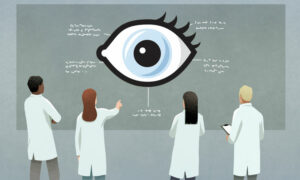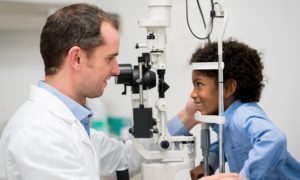September 1, 2020
By Carlee Young, OD, FAAO
 As the adage goes, “It takes a village to raise a child,” and children’s health care is no exception. As optometrists, we play an essential role in the primary eye care of children, but our role should not stop there. Myopia management is currently viewed as a niche specialty, especially outside of the field of optometry, but that is rapidly changing every year. By involving and educating our cross-professional referral sources we can elevate myopia management into the mainstream of care while helping the children of our community for today and the future.
As the adage goes, “It takes a village to raise a child,” and children’s health care is no exception. As optometrists, we play an essential role in the primary eye care of children, but our role should not stop there. Myopia management is currently viewed as a niche specialty, especially outside of the field of optometry, but that is rapidly changing every year. By involving and educating our cross-professional referral sources we can elevate myopia management into the mainstream of care while helping the children of our community for today and the future.
Cross-professional referrals can take many forms. In our office, pediatricians are our number one referral source. Pediatricians screen kids at their annual checkup and send them to us when a screening is failed or inconclusive. Pediatrician referrals bring in kids of all ages. Other health care providers such as speech, occupational and physical therapists who work closely with patients one on one can also spot early visual changes and make valuable referrals. Outside of direct health care, school nurses and teachers are another great source, particularly for school-aged kids who may benefit most from myopia management care. School nurses are a touchpoint for all students when school vision screenings take place, and for those who develop myopia in the middle of the school year, a teacher may be the first one to notice the problem. Finally, within the community we can find more great referral sources: coaches, tutors, daycare staff, other parents are all important.
Once you have identified potential referral sources, the key to maximizing the cross-professional referral is education. We are all aware of the daily challenges we face educating our patients and their parents in the office. By informing our cross-professional colleagues about myopia and the associated risks of high myopia, we build an initial touchpoint for parents. Ideally, this will create a network where parents have at least heard of myopia management before their child’s first appointment in your office. Cross-professional colleagues need not be experts in myopia management, but they should understand the key points. I break it down into four parts: what is myopia, the dangers of high myopia, management, and screening.
Cross-professional education can take many forms, especially in the pandemic era in which we currently find ourselves. Written communications are an excellent way to start. This allows you to provide all pertinent information in a concise form tailored to each individual referral source. Include a short introduction of yourself and your office, an introduction to myopia management in general, including current evidence-based research and any applicable patient education information. I have a two-page handout I provide to all parents of myopic children and find it an invaluable resource to share with other professionals as well. Including screening criteria for nurses and pediatricians can be particularly beneficial as the use of photo-refraction screening devices continues to grow in popularity. I include refractive guidance derived from the CLEERE study group.1 I recommend referral sources send any child aged 6 or younger with less than or equal to +0.75 diopter hyperopia for a full assessment of myopic potential. Children with such a low prescription are not flagged by the traditional algorithms used by photo-refraction devices. Still, through education, we can get these children into our office for risk assessment and education.
Written communication allows the receiver time to review the information on their own, but diligent follow up is needed. I find it best to include my personal phone number so that I am more accessible for questions in and out of the office. When in-person visits are once again appropriate, I recommend taking a similar approach to LASIK surgeons and tertiary-care doctors. Find out what is most important to each referral source. Pediatricians will have different priorities than school nurses. Tailor your visits accordingly, and regularly inform gatekeepers and decision-makers about what you do and how that is of value to them and the patients they refer.
Beyond direct interactions, your online presence can also serve as a source of information for the community, parents, and cross-professional referral sources. Use your online platforms to educate about myopia management in small, easy-to-understand segments. Get creative with Facebook Live or Instagram TV. Community outreach is another excellent way to be visible to other professionals and educate the community at large about myopia management. Back-to-school fairs, sports fairs, and community festivals are great places to set up booths or even vision screenings.
Myopia management is an essential and growing specialty in eye care, one in which we cannot succeed alone. Maximizing cross-professional referral opportunities through education and community outreach is a great way to build your patient base and provide cutting-edge care to the children we serve.

Carlee Young, OD, FAAO, is with Frisco Eye Associates, a Vision Source member practice with locations in Frisco, Texas
- CLEERE Study Group. Early Childhood Refractive Error and Parental History of Myopia as Predictors of Myopia. Invest Ophthalmol Vis Sci. 2010;51(1):115–121.













